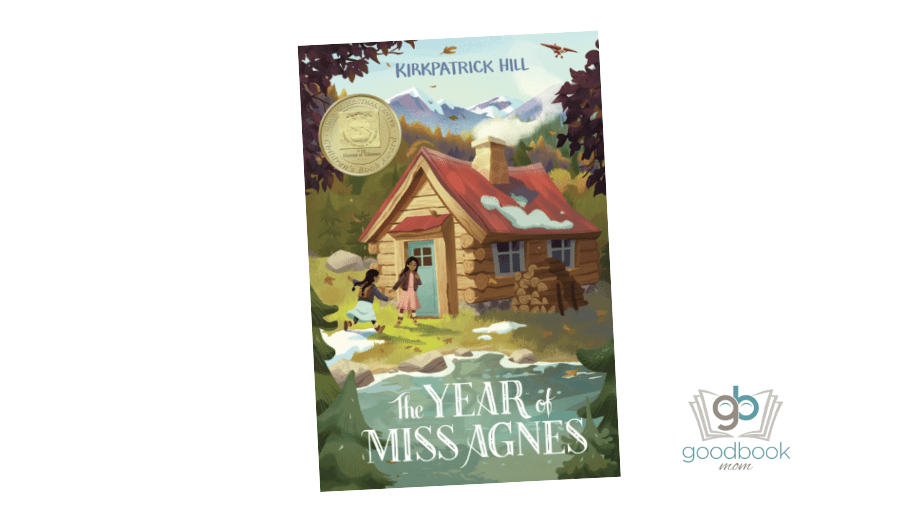
Summary
The Year of Miss Agnes is a historical fiction narrative set in a small town in Alaska in 1948. The focus is a one-room schoolhouse where the children are accustomed to teachers who either leave before the end of the school year or fail to return the following school year due to the difficult living and teaching situation. The story is told from the perspective of Frederika (Fred for short), a ten-year old native “Indian” girl.
In the opening chapter, we learn that the most recent teacher practically escapes the town early in the school year, in large part due to her hatred of the smell of fish that all the children have. After this teacher leaves, Fred learns that a new teacher, Miss Agnes, has come to teach in hopes of preventing the school from failing and closing. Upon visiting the unconventional, pants-wearing Miss Agnes, Fred discovers that she is English and plans to return to England after she finishes the school year.
Fred soon notices that everything is “good” different with Miss Agnes. Rather than withdraw from the challenge of teaching children in the Alaskan wilderness, Miss Agnes brings an unusual teaching style that is personal to each student. She reads classical stories to the children, teaches them geography, and foregoes tests and the typical Dick and Jane reading books.
One day, Fred’s deaf sister, Bokko brings lunch to Fred at school. When Miss Agnes learns that Bokko is 12 years old and has never been to school because her mother believes it unnecessary, Miss Agnes talks to Bokko’s mom to convince her to bring her to school. Miss Agnes does not see Bokko as less valuable due to her disability, but instead, purchases sign language books, takes time to learn sign language, and teaches Bokko how to communicate with others. In doing so, the other students also learn sign language, causing Bokko to feel known and loved by her community.
Overall, the students, who once believed they were unable to learn because they are native and live in a remote Alaskan village, are flourishing under Miss Agnes’ schooling and seeing for the first time the value of their education. Miss Agnes becomes involved in the community and goes out of her way to teach everyone, even adults who want to learn how to read. Because of Miss Agnes, the children start to believe that they are capable of doing great things.
Intertwined throughout the story, we learn about the customs and lifestyles of the native people of Alaska. Traditionally, each child is expected to contribute to the family and learn skills that will serve the family’s well-being. As part of this contribution, the children must go to fishing camp upon the completion of the school year. Fred is thankful to Miss Agnes for all she has taught them, but also saddened that Miss Agnes must return to England. After fish camp in September, Fred and Bokko return home and learn that Miss Agnes, unlike all previous teachers, has chosen to stay as their teacher for another year.
Reading Level: Ages 7-10
Read Aloud Age: 5+
Mom Thoughts
Although this book is entirely secular, it beautifully demonstrates how one person’s life can significantly impact an entire community. From a Christian worldview perspective, we can apply Miss Agnes’ life to what our lives should look like as redeemed people. Miss Agnes brings dignity and value to every child, no matter the circumstances. She also emphasizes and teaches the students the importance of being a life-long learner, another important biblical value we should teach our children. Instead of returning home to England, Miss Agnes puts aside her desires and chooses to pour herself into students at a school that generally drives teachers away.
From a historical and geographical perspective, it is also quite interesting, as we get a glimpse into life in the Alaskan frontier in the late 1940s. Overall, this is a heartwarming story for both boys and girls that shows us the innate value of every human being and how our lives can truly impact others.
Language: Although Fred and her community are natives to Alaska, they use the term “Indian” to describe themselves. At one time the word “stupid” is used to describe a way of talking. Fred’s mother describes Miss Agnes as a “skinny white woman” and another student is described as a “nuisance.”
Other things to know: Fred and her sister have a difficult relationship with their mom, which is not entirely resolved, but does improve after Bokko learns to communicate using sign language. The theme of death is mentioned briefly, as Fred’s father died of tuberculosis and another character’s mother died of measles. The story is told in the first-person narrative and contains grammatical errors that Fred would have made if she were telling the story to the reader directly.
This review is written by contributor, Alex. To learn more about Alex, click HERE.
This post may contain affiliate links. Please read our disclaimer for more info.
Buy This Book
At A Glance
| Number of Chapters | Number of Pages |
|---|---|
| 17 | 113 |

